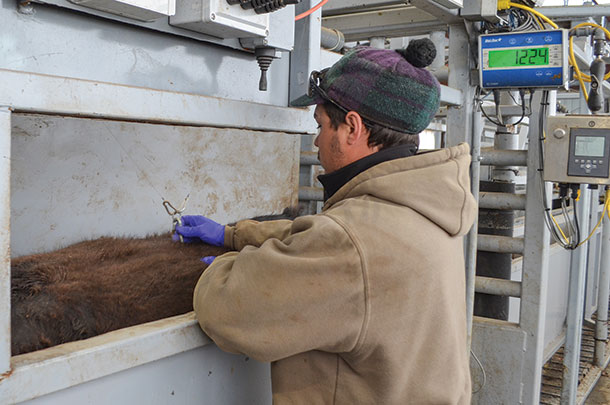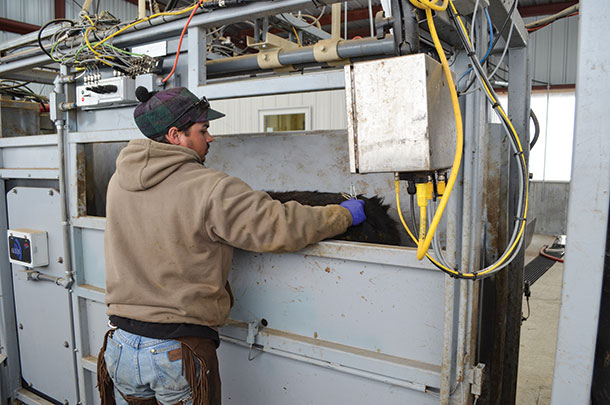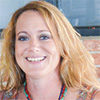Squeezing margins and remaining profitable requires skilled management, peak efficiency and innovation.
Innovation distinguishes a leader from a follower, and Steve Scholz of Lincoln County Feed Yard in Stapleton, Nebraska, is taking advantage of emerging technologies with the expansion of his feedyard to protect himself and his clients against market forces with the installation of the Cattle Classification and Sorting System from Performance Cattle Company.
“We just try to keep our customers happy and do as much as we can to keep them coming back. In order to do so, you’ve got to be on the cutting edge,” says Scholz.
The high-tech feedyard sorting system is designed to help feeders and producers market their cattle based on their determined optimal market endpoint and provide valuable information to producers to help them improve herd genetics.
Scholz started Lincoln County Feed Yard in 2009 with 4,000 head, which has now expanded to a 25,000-head facility.
“We are hoping with enough innovation that we will attract an upper echelon of people who will want to feed cattle. We’ve got big enough that now we are trying to provide more services to our customers,” says Kevin Unger, resource manager for Lincoln County Feed Yard.
The system uses a combination of objective measurements, including live weight and hip height, to calculate a frame score and classify cattle into different marketing groups based on their projected optimum target finish weight.
Using Cornell University’s Value Discovery Program, a validated growth model, the system produces a software profile that collects data on an individual animal from the time they arrive at the feedyard through the packing plant, providing valuable quantitative information for everyone in the beef production process.
“In the past, we were good at collecting lots of data, but what we were bad at was assimilating that data to improve our practices. The data was just too overwhelming,” says Unger, who was the former manager of Decatur County Feed Yard in Oberlin, Kansas.
“With this data-driven system we can now help answer the question: ‘What do I need to do to get better?’ We use the information to help our retained-ownership clients select the genetics that will or won’t work for their operations, to improve feed efficiency in the feedlot and increase the value of the animal for packers and consumers,” he says.
The sorting process begins when calves are received and processed as they arrive at Lincoln County Feed Yard. Initial measurements are taken as calves are run through the chute to be vaccinated. They are also given an electronic identification eartag, if they don’t already have one computer-coordinated with ranch and feedlot tags.
Measurements are taken again, usually 60 to 75 days later, when cattle are implanted. The computer system then builds a model based on how much weight and hip height an animal has gained which determines when it will reach optimal weight for market and what its individual cost of gain is.
The computer model automatically sorts the calves coming out of the chute four ways into different marketing groups. The groups are statistically sorted on a bell curve, improving pen utilization and reducing the need for “pen topping.”
The system then monitors when the point of cost of gain begins to exceed the value of gain.
“That’s the beauty of this model; the computer instantaneously tells you when the last dollar was made on each individual animal. There is no guessing,” says Unger.
Lincoln County Feed Yard’s cost of ration and their Cargill grid has already been input into the computer model, which is compatible with their current feedyard management and operations software. Cargill uses the electronic identification tag number to track carcass merit data, which is reported back to the feedyard.
Scholz says he chose the Cattle Classification and Sorting System over similar systems because it updates daily and learns, reconfiguring the model each time new data is input, making it more accurate over time.

“As the result of study and ongoing testing, as well as continuing research and development, improvements continue to be made to enhance the effectiveness and usability of the system,” says Max Garrison, veterinarian and feedyard consultant of Performance Cattle Company.
“We took the time and effort to research and develop the system to be effective and easy-to-use so users don’t have to spend so much time and effort to operate and administrate the system.”
Designed to minimize the operational impact of a feedyard, the system doesn’t require any special identification of cattle or a large investment in equipment, facilities or human resources to install and operate.
The system can easily be installed in existing working facilities with few modifications, generally with the most significant changes made to the sorting gates and pens.
The retractable external dimension measurement device is mounted in the top of a standard squeeze chute and requires the operator to momentarily touch the pointer midway between the hook bones, then the pin bones, and the controller automatically records the measurements.
The system can also be programmed to automate the chute to catch and release cattle and operate the sorting gates, freeing up the operator to focus on working cattle.
“It’s hard to believe there is that much difference in different marketing groups until you see it for yourself. There is a night-and-day difference,” says Scholz.
“On the last feed efficiency test on pen averages between different sires, there is a pound-and-a-half difference conversion from top to bottom, and that’s a big number in today’s environment.
“We think there is value of vertical integration, and this allows people to capitalize on the genetics. If the rancher is serious about developing his health program, serious about genetics and serious about his herd, there is no doubt in my mind he can make money retaining ownership of his cattle compared to what he would get at the sale barn,” says Scholz. “They get paid for the true value of their animals, have fewer over- or underweight discounts, fewer yield grade fours and more premiums.”

He added that the Cattle Classification and Sorting System has also been extremely useful to his clients who purchase sale barn cattle where lots can be highly variable and don’t always fit a pen.
Retained-ownership clients also have the added advantage of knowing up-front what it will cost to feed their cattle, helping them manage risk under a wide variety of economic and production conditions.
For Scholz in today’s clean-shaven cattle-feeding business, it costs nearly as much operating his feedyard at 90 percent full as it does when he is 100 percent full; therefore, it is critical to keep pens full to capacity, and the sorting system has helped him do that by knowing exactly when to market different lots of cattle.
“We’re excited. We now have documented success. I don’t have to be a shoe salesman. All I have to do is show them the data – here’s what we’ve done and the improvements we’ve made, and here’s how many dollars it netted the client,” says Unger. “We are legitimately trying to help our customers build more money on their bottom line.”
Allowing cattlemen to measure, track and exploit the potential of each animal helps build quality control into the cattle-feeding business. There is no doubt that when you have more information, you do a better job producing a better product. ![]()
PHOTO 1: Steve Scholz implants feedlot cattle.
PHOTO 2 & 3: Using the retractable external dimension measurement device to take hip height measurements. Photos provided by Jennifer Archibald.
Visit the Performance Cattle Company, LLC website for further information about the Cattle Classification and Sorting System.
Jennifer Archibald is a freelance writer from Lodgepole, South Dakota








